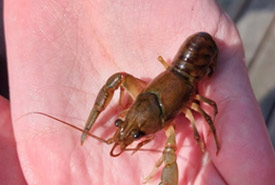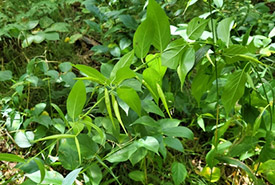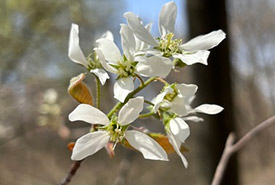Once you see it, you can’t unsee it

Northern clearwater crayfish (Photo by mahoonta, CC BY-NC 4.0)
As the Nature Conservancy of Canada’s (NCC’s) Big Backyard BioBlitz approaches, I have been reflecting on the ways that getting to know the wild species around me has enriched my life. I’ve needed to be able to identify key species for field work for NCC in Ontario, but beyond that, taking time to observe the life around me has strengthened my love for nature. In some cases, seeing something repeatedly made an indelible impression on my mind's eye!
Knowing more about the biodiversity around me deepens my connection with nature. Learning to identify a new species often means that I’m pausing on my hike, carefully observing its physical features, habitat and behaviour. Beyond learning its name, I may have also learned about when it flowers, what it eats, its life cycle or its range. This species is no longer part of the background, but now a story to follow and share on future hikes.
There are some species that, once learned, have taken up prime real estate in my brain, becoming impossible to miss. When I had my first job in the field, my supervisor referred to this as developing a “search image,” and I realized that this had happened to me many times before, and I’ll bet it has happened to you too!
For example, as a child, my sister and I loved searching for crayfish in the shallows of a rocky lake, turning over rock after rock and watching the crayfish zoom backwards, so well camouflaged that they seemed to disappear as soon as they stopped moving. I remember falling asleep to the unshakeable image of rocks and crayfish projected in my mind’s eye.
My first field job was conducting a census of the now-threatened blue ash tree in Point Pelee National Park. There are a few species of ash species in the Carolinian forests, so first we had to learn to differentiate them (fortunately, the blue ash has some unique features), and then we had to find them in dense vegetation, at all stages — from seedling to mature trees with leaves in the canopy 20 metres up. After only a few days in the field, a tiny blue ash sapling seemed to glow a different green from the forest floor, like a beacon for our attention.

Dog-strangling vine with seedpods (Photo by Samuel Brinker, CC BY-NC 4.0)
When I was working in the Carden Alvar with NCC, one of our priority tasks every summer was to map and control European swallow-wort (more commonly known as dog-strangling vine or DSV). This invasive vine can outcompete native vegetation in this globally rare ecosystem, and our team’s love of the alvar motivated us to seek and control every DSV plant we could find. After many weeks spent searching for these plants each year, the image of DSV at all development stages is seared into my brain, and I can still identify a roadside patch while speeding down the highway or whizzing by on my bike.

Common serviceberry (Photo by Carolyn, CC BY-NC 4.0)
I think this type of motivation can turn regular species identification into a near obsession. My colleague described having dreams of garden weeds dancing in her head. And at age four, my son developed an incredibly accurate search image for serviceberry trees in downtown Kitchener. Two years later, he can still lead us on biking tours to harvest berries for snacking.
While falling asleep to mental images of crayfish may not sound ideal to some, I hope that NCC’s Bioblitz encourages people to take a second look at the mushroom or shrub or beetle they are walking past. There are dazzlingly complex and interesting stories playing out around us, and all we need to do is tune in.
NCC’s Big Backyard Bioblitz
Join thousands of newbies and seasoned bioblitzers across the country. It’s a great way to get closer to nature — and contribute to the protection of the species you love!
All you need is a smartphone, tablet or digital camera. Just snap photos of plants, animals, insects and other creatures wherever you happen to be. Then share your observations to help scientists take stock of local biodiversity, track rare species and fight invasive ones.
Sign me up!


